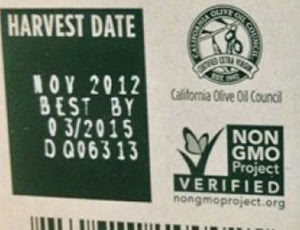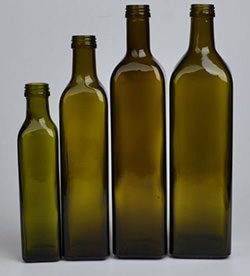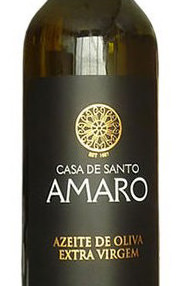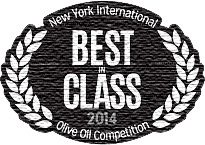
What To Look For When Buying Olive Oil
Posted on 11 Dec, 2021

There are 700+ different kinds of olives, which make thousands of different kinds of oil. Asking “what’s the best olive oil?” is like asking “what’s the best wine?” But with so many olive oil brands on the market, buying the right one can be a daunting task. So we’ve made a checklist of the basic things you should watch out for.
Buy Local
 With olive oil, like all natural fruit juices, its flavor and aroma begin to deteriorate within a few months of milling, a decline that accelerates when the oil is bottled, and really speeds up when the bottle is opened.
With olive oil, like all natural fruit juices, its flavor and aroma begin to deteriorate within a few months of milling, a decline that accelerates when the oil is bottled, and really speeds up when the bottle is opened.
To get the freshest oil, buy as close to home as possible. The further it has to travel and the more it has to be handled, the likelier it will be that the quality and freshness will be affected.
Buying a locally produced extra virgin olive oil is a great place to start – wherever you are in the world.
 Harvest and/or Best Before Date
Harvest and/or Best Before Date
Extra virgin olive oil is a natural product, and like all things in nature it deteriorates over time. A quality bottle of extra virgin olive oil will proudly announce its origin and optimal lifespan.
 Dark Glass
Dark Glass
It’s not just aesthetics dictating the use of coloured glass for bottling premium extra virgin olive oil; dark glass helps protect the contents. Clear glass is more easily penetrated by light and temperature changes, whereas green, black, brown and other dark colours are all much more resistant.
Oils bottled in clear glass may have preservatives added to increase their shelf life; always check the ingredients list to ensure your oil’s integrity. An interesting piece of trivia: this same dark glass rule applies to bottled beer.
 “Extra Virgin” On The Label
“Extra Virgin” On The Label
Purified and refined oils, labeled simply “olive oil” or “pure olive oil,” are often made with lower-quality, processed oils that have little taste. Extra-virgin oils undergo minimal processing, so their flavor and aroma molecules remain intact.
 An Estate Name On The Label
An Estate Name On The Label
Small producers who grow and press their own olives often include the name of their estate on the bottle. Chances are, you won’t recognize the name, but that doesn’t matter. Having any name on the label is a sign of quality. Almost as good: an official mark or seal showing that the oil comes from a designated region that specializes in producing oils, such as PDO (the European Union’s official Protected Designation of Origin seal) or DOP (a similar seal from Italy).
USDA Organic Seal
 This certification from the U.S. Department of Agriculture means that at least 95 percent of the oil—either imported or domestic—is made from olives grown without the use of pesticides or synthetic fertilizers. The seal is typically an indicator of a good product, but don’t be alarmed if it’s missing. Many of the finest small olive-oil producers cannot afford to pay for USDA certification.
This certification from the U.S. Department of Agriculture means that at least 95 percent of the oil—either imported or domestic—is made from olives grown without the use of pesticides or synthetic fertilizers. The seal is typically an indicator of a good product, but don’t be alarmed if it’s missing. Many of the finest small olive-oil producers cannot afford to pay for USDA certification.
Accolades
 Awards and prizes aren’t everything, but who doesn’t love a winner? While some titles and claims are flimsy at best, there’s no question excellence is increasingly being recognised among extra virgin olive oil producers as in other industries.
Awards and prizes aren’t everything, but who doesn’t love a winner? While some titles and claims are flimsy at best, there’s no question excellence is increasingly being recognised among extra virgin olive oil producers as in other industries.
What To Disregard
 Oil Color
Oil Color
Some people feel that the greener the oil, the better the quality. Color can vary widely, depending on, among other things, the type of olives used and at what point they were pressed.
 “First cold pressed” On The Label
“First cold pressed” On The Label
This term relates to old-fashioned and rarely used methods of oil production. What’s more, the phrase is not regulated by the USDA or the Food and Drug Administration.
 “Product of” On The Label
“Product of” On The Label
If an oil is labeled “product of Italy,” that signifies only that the oil was packed and shipped in Italy. The olives could have been grown, harvested, and pressed in, say, Tunisia, Greece, or Spain. To find out where an oil really comes from, look at the estate name.
Books On Healthy Eating We Like

by Del Sroufe

by Kris Carr

by Michele Anna Jordan

by Julia Mirabella

 Make Your Own Fudge Brownie Chocolate Protein Bars
Make Your Own Fudge Brownie Chocolate Protein Bars How to Bring Any Almost-Spoiled Produce Back to Life
How to Bring Any Almost-Spoiled Produce Back to Life How to Drink, Have Fun AND Lose Weight
How to Drink, Have Fun AND Lose Weight The 12 Worst Foods For Appetite Control
The 12 Worst Foods For Appetite Control










